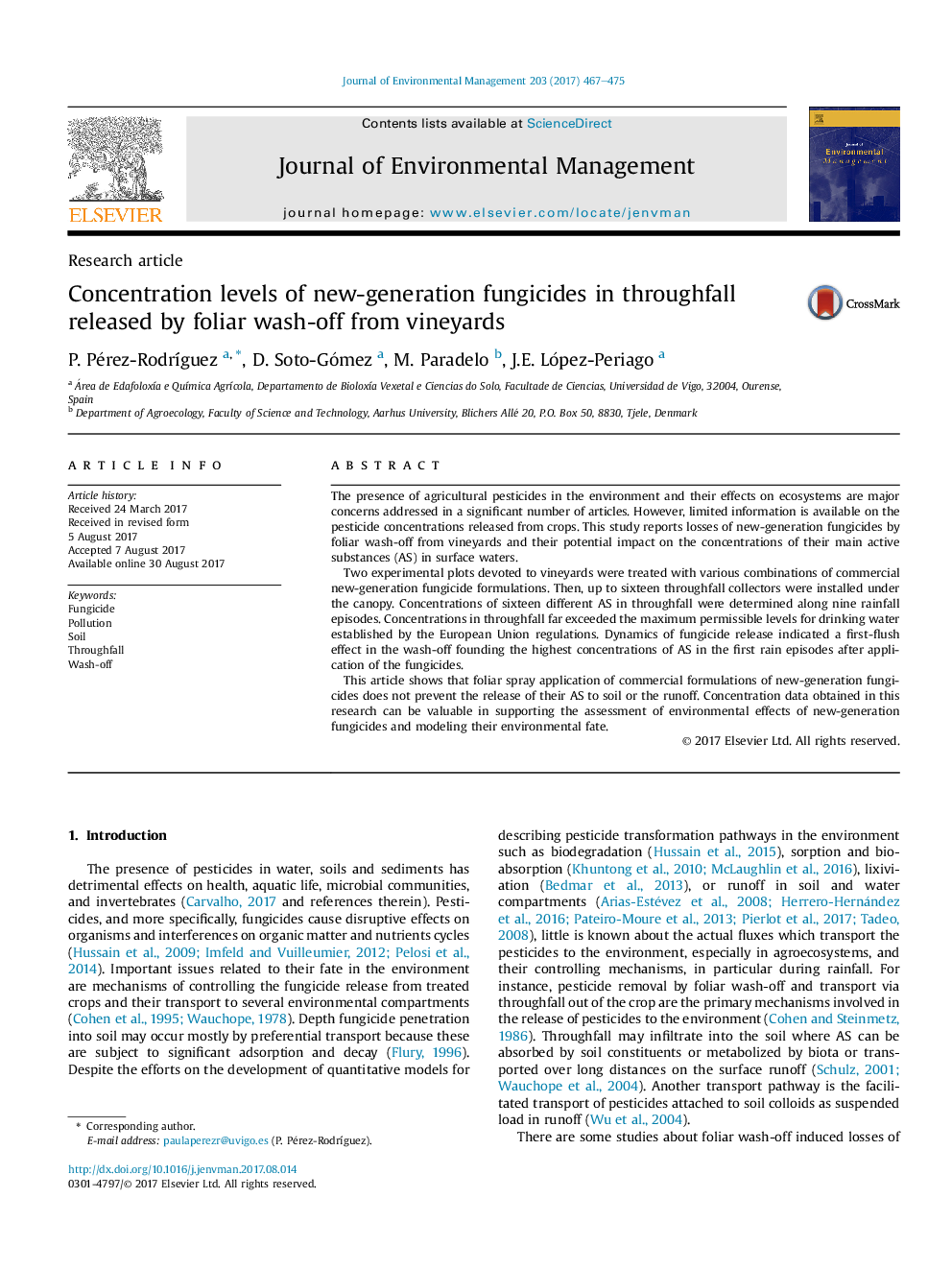| Article ID | Journal | Published Year | Pages | File Type |
|---|---|---|---|---|
| 5116533 | Journal of Environmental Management | 2017 | 9 Pages |
â¢Throughfall was monitored in vineyards treated with new-generation fungicides.â¢Twelve active substances (AS) were detected in throughfall.â¢Concentrations widely exceeded the limits established by European regulations.â¢The release of some persistent AS continued after several rainfall episodes.
The presence of agricultural pesticides in the environment and their effects on ecosystems are major concerns addressed in a significant number of articles. However, limited information is available on the pesticide concentrations released from crops. This study reports losses of new-generation fungicides by foliar wash-off from vineyards and their potential impact on the concentrations of their main active substances (AS) in surface waters.Two experimental plots devoted to vineyards were treated with various combinations of commercial new-generation fungicide formulations. Then, up to sixteen throughfall collectors were installed under the canopy. Concentrations of sixteen different AS in throughfall were determined along nine rainfall episodes. Concentrations in throughfall far exceeded the maximum permissible levels for drinking water established by the European Union regulations. Dynamics of fungicide release indicated a first-flush effect in the wash-off founding the highest concentrations of AS in the first rain episodes after application of the fungicides.This article shows that foliar spray application of commercial formulations of new-generation fungicides does not prevent the release of their AS to soil or the runoff. Concentration data obtained in this research can be valuable in supporting the assessment of environmental effects of new-generation fungicides and modeling their environmental fate.
